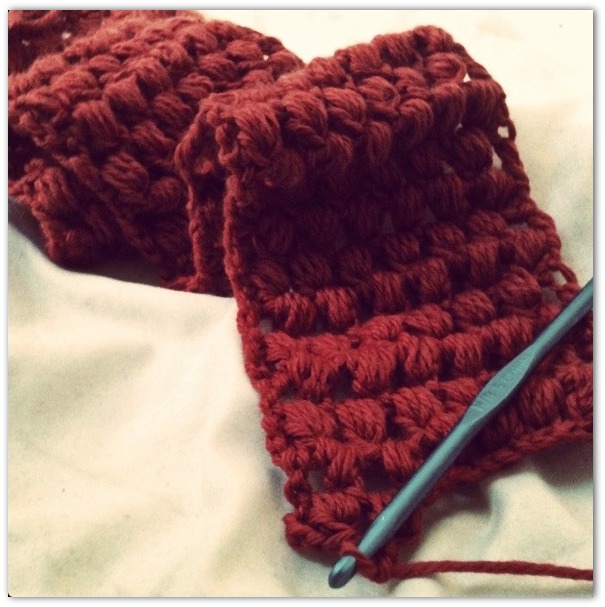Years ago, I learned to crochet. A roommate–who could churn out handmade blankets like a factory–taught me the chain stitch. Before I was even nine stitches in, my zeal got the best of me. Now that I can crochet, I thought to myself as I started stitch #10, I’ll probably do this every day. I’ll make socks and hats and scarves and blankets and sweaters . . .
Halfway through, I quit.
It turned out that the beautifully variegated green yarn that I bought looked like camouflage once it was crocheted into rows. A dozen hours or more, and all I had to show for it was a crooked camo scarf that was hardly long enough for a cat.
Since then, crocheting has been a spectator craft for me. There’s something poetic about yarn in the hands of a skilled crocheter. In my own hands however, this poetry turns to math. To me, crochet is like trying to solve a geometry equation using only your fingers. I know that all the twisting and pulling and looping is supposed to turn a single strand of yarn into a complex work of art, but I am at a loss to figure out how.
A few weeks ago, crochet piqued my interest once more. A friend of mine (who’s a talented crocheter) was making a hat using something called a puff stitch. I wasn’t interested in trying it myself until she shared one very important detail about the puff stitch: “It’s fast.” How fast? “You could probably make a hat in a day or two.” Being the instant-gratification crafter that I am, I decided to give it a try.
It was hard for me to catch on. I was reminded of my first piano lesson when I was five, awkwardly plunking out Hot Cross Buns with one finger. I pulled out stitches over and over. I got frustrated. Then I got bored. Then I realized it had been a very good decision to make a headband instead of a hat.
One day, I finally caught on. A few days after that (thanks to some additional “tutoring” courtesy of YouTube), I finished it.





